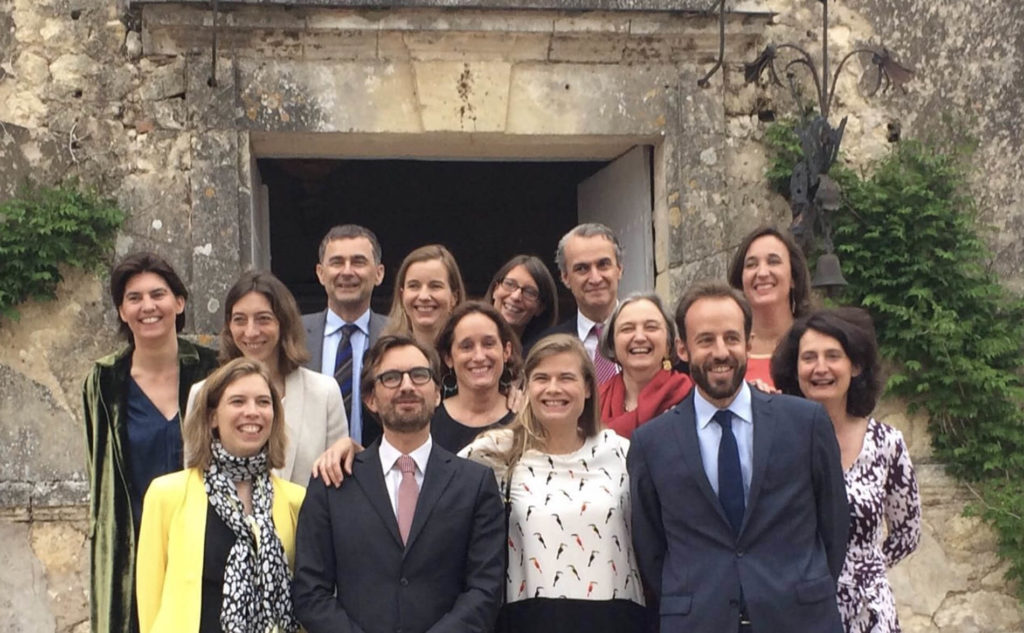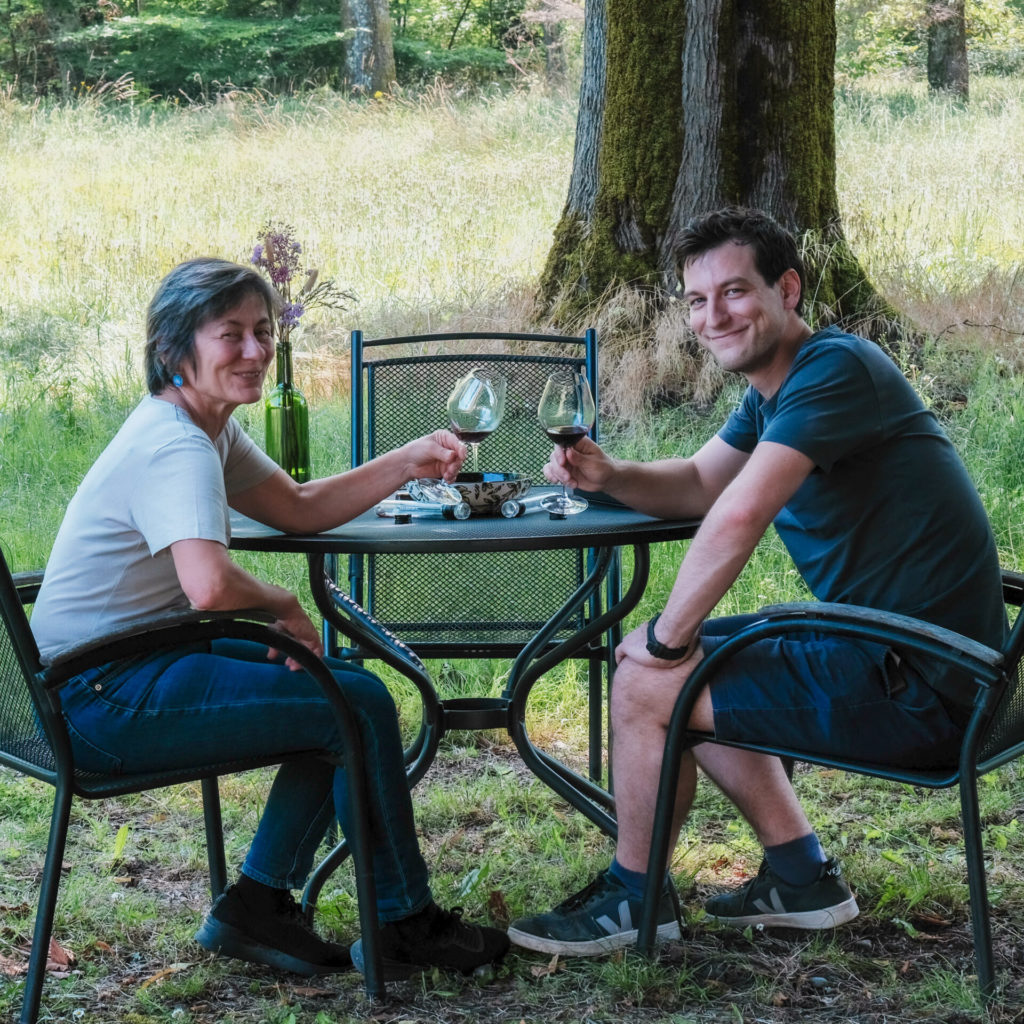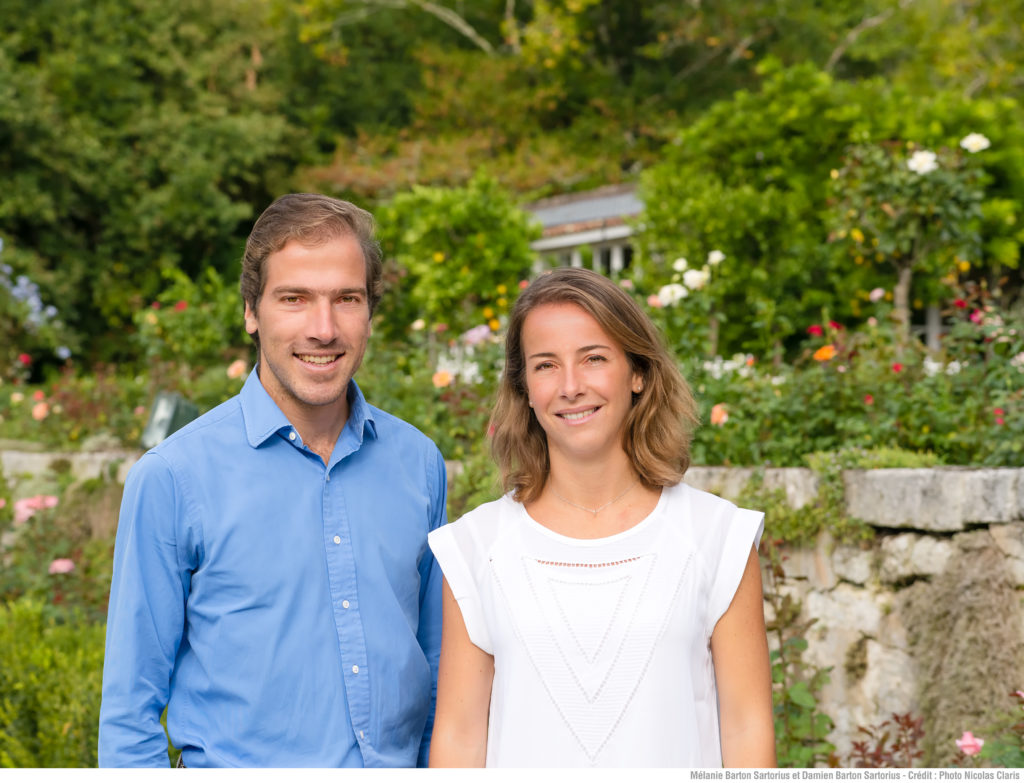Bordeaux has a long tradition of family-owned properties. Many wine estates remain in the same family for generations. Famous names such as Lafite Rothschild, Margaux, Haut Brion, Mouton Rothschild and Pontet Canet all have a long history of family ownership.
But it’s not only the famous names, family ownership across the region is a keystone of what makes Bordeaux unique, bringing a long-term perspective. Generations working together spark new ideas whilst respecting tradition, learning from both past successes and mistakes. Each new generation brings innovation to wine making, marketing and now wine tourism.
Chateau Le Taillan in the Haut Médoc has been owned by the Cruse family since 1896. It is now run by Armelle Falcy, one of five sisters and the fourth generation to own the winery. Today, she works with her daughter Tatiana at the historic 26-ha estate classified as a Cru Bourgeois Exceptionnel, a beautiful historical monument that remains their family home.
Out of her two sisters and 10 cousins, Tatiana is the only member of the fifth generation directly involved in the winery. She began by running social media and now spearheads wine tourism and weddings. Over 10,000 guests visit the property each year, enjoying different tasting experiences including in the ancient cellars.
Together, they have created a line of funky ‘La Rose’ labels in white, red and rosé, sporting a stylized rose. Bag-in-box wines appeal to a larger and younger audience, even encouraging them to chill the reds and serve them as an aperitif.
The de Lambert family tells a similar story of cousins at Chateau de Sales in Pomerol. The largest estate of the Pomerol, it is in the same family for almost five centuries, passed down through the generations since 1578. In 2017, 14 of the Lambert cousins became then co-owners of the château, taking over from Bruno de Lambert, who first opened the property to visitors over 30 years ago.

One of the cousins, Marine Treppoz, now runs the property on behalf of the family. She has experience, having previously managed Domaine de Baronarques, another family owned property belonging to the Rothschilds. She also has family expertise to call on. One cousin, Gonzague de Lambert, is director of Château de Ferrand, a Classified Growth in neighboring Saint Emilion (also family-owned by the Bichs). Another cousin, Laure de Lambert Compeyrot, is the 6th generation at the helm of Château Sigalas Rabaud (Best Of Wine Tourism winner in 2022) taking over in 2013. It is the first classified growth of Sauternes. Constantly innovating, Laure introduced new dry Sémillon wines, a Crémant de Bordeaux and a sulphur-free wine called Le 5 that she serves over ice, shocking the old guard.
Her relaxed, chic guest rooms, winner of a Best Of Tourism award, typify discreet French charm.
She has been instrumental in creating the Graves and Sauternes wine route and is involved in a collective initiative to recruit and train local vineyard workers, projects that require the long-term vision that family operators can bring. She believes ‘It’s a catastrophe for the local economy and the community that so many family properties are disappearing to corporate ownership’. Fortunately, her two sons, Matthieu et Jean Compeyrot, are both in the wine business, running their own négociant business and participating in the family vineyard.
From Mother to son
Marie Laure Lurton, from the revered Bordeaux Lurton , is also working with her son Gabriel. To celebrate the 50th anniversary of Château de Villegeorge, they created Harmonie, a limited-edition cuvée, a blend of three vintages – an apt tribute to three generations of the Lurton family who are behind the property. The late Lucien Lurton was the first to see the potential of the property, a former Cru Bourgeois Exceptionnel, when he bought it in 1973. Marie-Laure took over in 1992, the same year she took over Château la Tour Bessan in Margaux. Now Gabriel has joined the team and the new label is designed by her daughter Joséphine. This year saw the opening of the newly renovated Château la Tour Bessan.

Another story of mother-to-son transition is Château Paloumey, also in the Haut-Médoc.When the Caseneuve family bought the property in 1989, there were no vines at all, destroyed by phylloxera and the economic effects of WWII. Thanks to the dynamism of Martine Cazeneuve the property now covers 37 ha of vines.
Since 2015, this Cru Bourgeois Exceptionnel is run by second-generation Pierre Cazeneuve. An agricultural engineer, he has worked at the family vineyard since the 2015 harvest, taking over the management in 2018. Ever inventive, he released a first white wine, a Blanc de Noir, with the 2023 vintage. He used this launch to experiment with bottle consignment, using water soluble glue so labels wash off easily, allowing bottles to be reused rather than recycled, something he hopes to expand to all his wines.
This philosophy perfectly aligns with his organic certification, engagement with agroforestry and the 400m2 of solar panels on the tractor shed roof, enough to be autonomous in energy.
An open door philosophy has made Paloumey a leader in Médoc wine tourism. They won a Best of Gold in 2011, and by 2015 doubled the number of visitors. They are now number one on Trip Advisor for the Médoc.
Diversification
Stéphanie de Boüard-Rivoal is the eighth generation at the head of Château Angelus (the third woman in charge in 250 years). Since her arrival in 2012, she has expanded the family focus to include hospitality. In 2013, she acquired Le Logis de La Cadène in Saint Emilion. (awarded a Michelin star in 2017), adding Maison de la Cadène, a 17th century townhouse and the two star hotel l’Auberge de la Commanderie to the portfolio.
In 2019, she expanded further into Bordeaux city, buying Le Gabriel in one of the city’s iconic, 18th-century waterfront buildings. It houses a chic ground-floor bar, a bistro and Michelin-starred restaurant. Between the two sites, they serve 240 covers daily. They’ve created La Ferme 1544 to supply them with fresh products.
Family History
Siblings Damien and Melanie are the eighth generation of the Barton dynasty, owners of two Grands Crus Classés in Saint Julien, Châteaux Langoa and Léoville Barton, since the 1800s and more recently Château Mauvesin Barton in Moulis. They learned about vines and winemaking first from their grandfather, legendary Antony Barton, and today work alongside their mother Lilian.

In 2017, Damien created a modern, grape variety-based wine concept focused on sustainability, bottling wine at point of use and reusing bottles, tackling the main source of wine’s carbon foot print). He also helped designing the new family cellar, opened in 2020, with a focus on both environmental sustainability and wine tourism
Mélanie is the first family oenologist, now Technical Director of Château Mauvesin Barton and helping viticultural management of Châteaux Langoa and Léoville Barton. She will introduce her first white wine in this 2025 vintage. They both embraced agro-ecology long before it was fashionable. Since the 2023 vintage, they have introduced lighter bottles, economizing 40 tonnes of glass. Since the 2021 vintage, bottles of Chateau Langoa Barton are shipped in 100% French cardboard cartons, reducing the shipping carbon footprint six-fold.
Like many family estates, they aim to pass on a healthy and sustainable vineyard, and business, to future generations. The 9th generation is already here!
Author: Wendy Narby – Insider Tasting
Photo credits : @Mika_Boudot / ©Sales Family / @JosephineRouxHarmonie12 / @Nicolas Claris